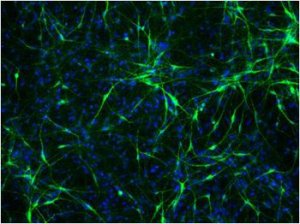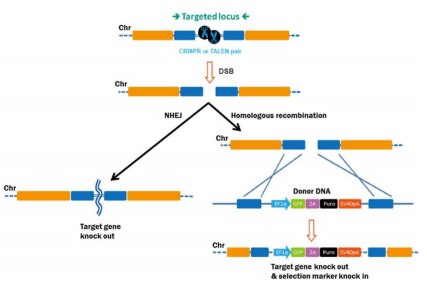Access to neural cellular models for in vitro Neuroscience research enters into a new era.
XCell Science, experts in cellular and genome engineering, provide genetically modified cellular models differentiated from Human induced Pluripotent Stem Cell (iPSC) lines. tebu-bio bring its scientific and logistics skills to deliver in Europe these high-quality and characterized neural cell derivatives for R&D, drug discovery, toxicology and regenerative medicine approaches.
Unlimited sources of biologically relevant functional neural cells
Proprietary high-efficiency protocols allow the directed differentiation of these iPS lines into a variety of functional neural cells, such as:
- Neural Stem Cells (NSC),
- Neurons,
- Dopaminergic neurons,
- Astrocytes.
Disease-specific knock-out isogenic neural cell lines
tebu-bio’s experts are pleased to introduce a collection of isogenic knock-out iPSC lines mimicking genetic defects identified in CNS disorders (Parkinson’s and Alzheimer’s diseases, Autism, Schizophrenia and Amyotrophic Lateral Sclerosis (ALS)):
- BDNF-/-: Homozygous knockout of the BDNF gene,

Expression of TH in Ready-to-use XCell DOPA cells prolonged cultured in DOPA medium. - APOE-/-: Homozygous knockout of the APOE gene,
- DISC1-/-: Homozygous knockout of the DISC1 gene,
- CNTNAP2-/-: Homozygous knockout of the CNTNAP2 gene,
- SOD1-/-: Homozygous knockout of the SOD1 gene,
- Park2-/-: Homozygous knockout of the Park2 gene,
- Park7-/-: Homozygous knockout of the Park7 gene.
Want to know more about these unlimited iPSC-derived neural cellular models ?

Be among the first to receive the XCell Science launch pack by tebu-bio to optimise your in vitro CNS-specific cellular models.
Sign up now!
[contact-form to=’mycells@tebu-bio.com’ subject=’Yes%26#x002c; I want to receive Xcell Science Neural cells launch pack by tebu-bio’][contact-field label=’Name’ type=’name’ required=’1’/][contact-field label=’Email’ type=’email’ required=’1’/][contact-field label=’Comment’ type=’textarea’ required=’1’/][/contact-form]

Related posts regarding CNS and Stem cell studies:
- 3 unique Amyloid Beta peptide (Aß) research tools to boost Alzheimer’s Disease research
- 5 reasons to prefer the MOAB-2 antibody in Alzheimer‘s Disease research
- How is Amylo-Glo a brighter, longer lasting and higher definition Amyloid plaque marker?
- Return of SIRT1 deacetylase – Why is SIRT1 so attractive in Drug discovery and Stem cell research?
- 3 fluorogenic substrates for analyzing undifferentiated iPS and Stem cells
- Study how miRNAs regulate Stem cell homeostasis and differentiation



